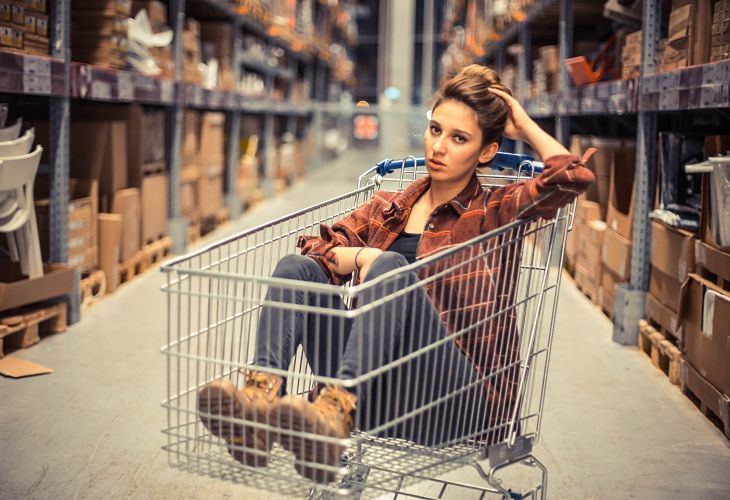Statistics every (physical) fashion retailer should know
The e-commerce studies of 2018 are well proclaimed and published. And for 2019, some results are already available. Time for a short summary of the most surprising statistics and strongest evolutions. What are the recent trends for e-commerce in the fashion sector? What do you have to keep in mind as a fashion retailer the upcoming years? And how to respond as a physical retailer? In this article you’ll receive some useful insights, tips & tricks which you can immediately put into practice!
It’s clear that e-commerce is still on the rise, also in the fashion industry. The Belgian e-commerce market has grown with 1,2 billion euros in 2018. From the E-commerce Barometer 2018 of Safeshops and The House of Marketing, we learn that the average value of a shopping cart has increased with 3,31% and exceeded 100 euros in 2018. This is true both for small and larger webshops. For fashion products, the average value is slightly lower, at €74. In 2019, 39% of shoppers indicated that they frequently buy fashion online, compared to 24% in 2017.
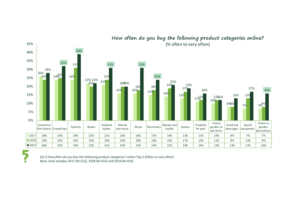
Physical stores have strong assets to make the difference
From the numbers above, we can conclude that e-commerce will take on a more prominent role within the retail landscape. It’s not a question anymore about whether, but how and to which extent you should adapt yourself as a physical retailer.Physical stores have strong assets compared to webshops, which they can use to their advantage to keep welcoming customers into their doors. Research from Comeos shows that for fashion articles, a staggering 72% of consumers says that their reason of rejection to buy fashion online is that they first want to see and try the items before deciding to buy. In addition, 1 out of 5 consumers wishes to receive personal advice from a shop assistant during their shopping journey. Personal assistance and the possibility to fit in-store are therefore two invaluable assets for physical stores, which give them a competitive edge over webshops. Other reasons why consumers prefer to do their shopping at a physical store, include the irreplaceable in-store shopping experience, easy return service and immediate availability of the products.
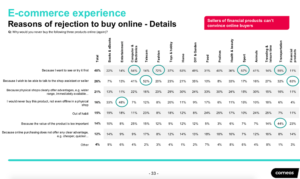
Webrooming & showrooming occur more frequently
On the one hand, 48% of consumers says they often first look online and know exactly what they want when they go to a physical store to make the purchase. On the other hand, 28% of consumers indicates that they like to find inspiration in-store. Afterwards, they will buy online what they found interesting in the shops. On average, webrooming occurs more frequently than showrooming, but both phenomena have grown with at least 5% over the past year. That’s why a well-thought-out omnichannel strategy is not just a luxury anymore. Today, it’s an essential component of any successful retail company.
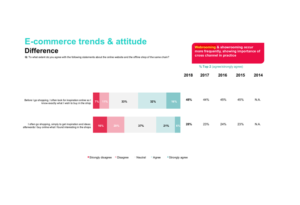 How to respond to these new evolutions and trends?
How to respond to these new evolutions and trends?
The future of retail lies within a phygital model. This means that the physical and digital shopping experiences are seamlessly integrated and reinforce one another. Therefore, you should make sure to develop both your on- & offline channels, allowing your customers to easily switch from a digital to a physical one. Let the customer enjoy an all-in-one shopping experience across different channels, which doesn’t necessarily mean you should have your own full-fletched webshop. Take for example the possibility to reserve or tweak certain products online, see and try them in-store, receive personal and professional advice and finally take home what you want. When customers are satisfied about their experience, they might leave you an online review, which boosts your online visibility, again lowering the barrier for other potential customers to find and visit your physical store.
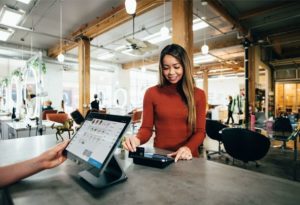
As a physical retailer, you can make the difference by focusing on the advantages of offline shopping, as mentioned above. When your opening hours are available on Google, when your product offering is available or at least visible online, when you can ideally reserve products and have them ready at the store, when you can leave a message on facebook, many customers will be more than happy to pay your store a visit. 15% of Belgian consumers already prefers ‘Click & Fit’ applications, a number that is still on the rise.
